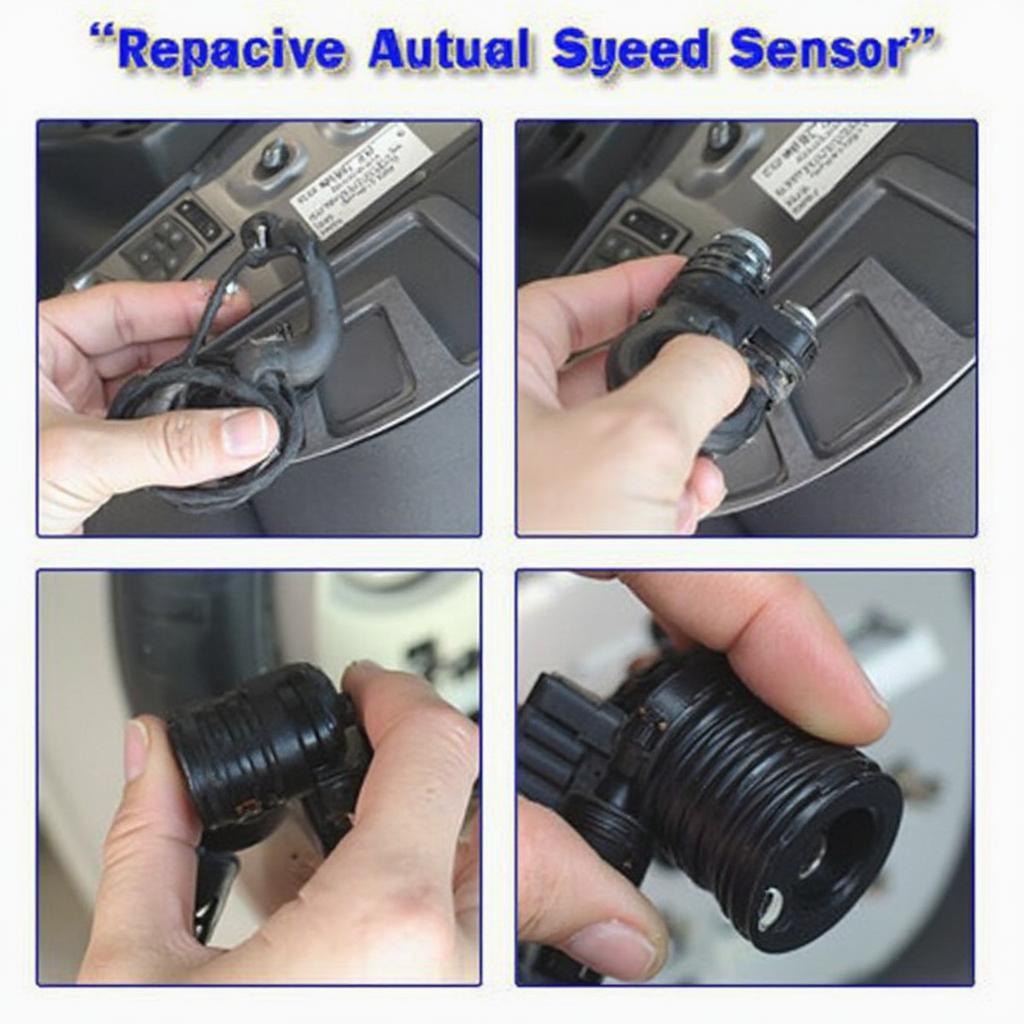The obd2 p0500 code indicates a problem with your vehicle’s speed sensor. This article will delve into the causes, symptoms, diagnostic procedures, and solutions for this common OBD2 trouble code. We’ll equip you with the knowledge to understand and address this issue, saving you time and potential repair costs.
What is the OBD2 P0500 Code?
The OBD2 P0500 code signifies a “Vehicle Speed Sensor Malfunction.” This sensor, often located on the transmission output shaft or rear differential, plays a crucial role in various vehicle systems, including:
- Speedometer readings
- Cruise control operation
- Anti-lock braking systems (ABS)
- Traction control
- Transmission shifting
When the sensor fails or provides erratic readings, the Powertrain Control Module (PCM) detects the discrepancy and triggers the P0500 code.
Causes of the OBD2 P0500 Code
Several factors can contribute to a P0500 code. Understanding these potential causes is the first step in effective troubleshooting. Some common culprits include:
- Faulty Vehicle Speed Sensor (VSS): This is often the primary cause. Over time, sensors can wear out or become damaged.
- Damaged Wiring or Connector: Wiring harnesses can become frayed, corroded, or disconnected, disrupting the signal between the sensor and the PCM.
- Transmission Fluid Issues: Low or contaminated transmission fluid can interfere with the sensor’s operation.
- PCM Issues (Rare): Although less common, a malfunctioning PCM can also trigger this code.
Symptoms of a P0500 Code
Recognizing the symptoms of a P0500 code can help you diagnose the issue early on. These symptoms can vary in severity and may include:
- Erratic or Inaccurate Speedometer Readings: The speedometer needle may fluctuate, drop to zero, or display incorrect speeds.
- Malfunctioning Cruise Control: The cruise control may become disabled or fail to engage.
- ABS Problems: The ABS light might illuminate on the dashboard, indicating potential issues with the anti-lock braking system.
- Check Engine Light: The check engine light is the most common indicator of an OBD2 code, including the P0500.
Diagnosing the OBD2 P0500 Code
A systematic approach is crucial when diagnosing a P0500 code. Here’s a step-by-step guide:
- Retrieve the Code: Use an OBD2 scanner to confirm the P0500 code.
- Inspect the Wiring and Connector: Visually examine the wiring harness and connector for any damage, corrosion, or loose connections.
- Check Transmission Fluid: Ensure the transmission fluid level is correct and the fluid isn’t contaminated.
- Test the Vehicle Speed Sensor: Use a multimeter to test the sensor’s resistance and voltage output.
How to Fix the OBD2 P0500 Code
Once you’ve diagnosed the problem, the appropriate solution can be implemented:
- Replace the Vehicle Speed Sensor: If the sensor is faulty, replacing it is usually the most effective fix.
- Repair Wiring or Connector: Damaged wiring or connectors should be repaired or replaced as necessary.
- Change Transmission Fluid: Low or contaminated fluid should be replaced with the correct type and quantity.
- Consult a Professional: If the problem persists or you suspect a PCM issue, consult a qualified mechanic.
 OBD2 P0500 Speed Sensor Replacement
OBD2 P0500 Speed Sensor Replacement
Expert Insights
“The P0500 code is often overlooked, but it can significantly impact vehicle performance and safety,” says John Smith, ASE Certified Master Technician. “Addressing the issue promptly can prevent further complications.”
“Regular maintenance, including checking transmission fluid and inspecting wiring, can help prevent P0500 codes from occurring,” adds Sarah Jones, Automotive Engineer.
Conclusion
The obd2 p0500 code, indicating a vehicle speed sensor malfunction, can lead to various driving issues. By understanding the causes, symptoms, and diagnostic procedures outlined in this article, you can effectively address this problem and ensure your vehicle’s optimal performance and safety.
FAQ
- What does the P0500 code mean? It indicates a problem with the vehicle speed sensor.
- Can I drive with a P0500 code? It’s best to address the issue promptly to avoid potential safety concerns.
- How much does it cost to fix a P0500 code? The cost varies depending on the specific repair needed.
- How do I diagnose a P0500 code? Use an OBD2 scanner and follow the diagnostic steps outlined in this article.
- What are the common symptoms of a P0500 code? Erratic speedometer, malfunctioning cruise control, and ABS issues.
- Can I fix a P0500 code myself? Depending on your mechanical skills, you might be able to replace the sensor or repair wiring.
- What if the problem persists after replacing the sensor? Consult a qualified mechanic for further diagnosis.
Need help with your P0500 code? Contact us via WhatsApp: +1(641)206-8880, Email: [email protected] or visit us at 789 Elm Street, San Francisco, CA 94102, USA. We offer 24/7 customer support.